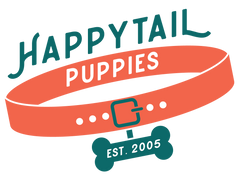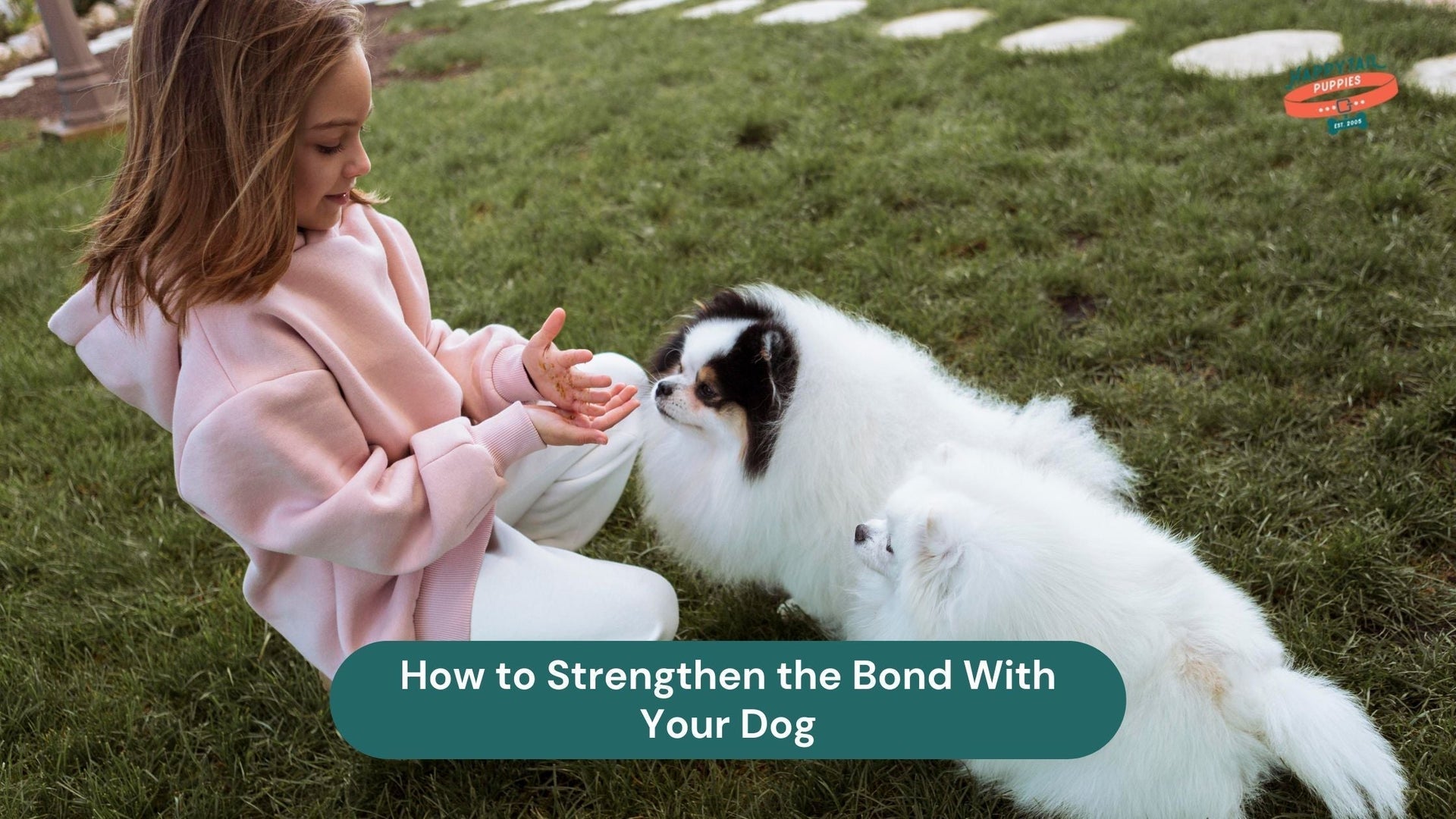How to Strengthen the Bond With Your Dog: 10 Proven Ways That Work
🐾Table of Contents
There are only a handful of things in life that match the comfort a dog's presence can bring. The innocence in their eyes when they tilt their heads to know us as humans or unwind quietly beside us projects those unspoken promises of forever companionships. Dogs have infinite unconditional love, which they give us, building an everlasting connection with us. It involves more than affection, as the entire endeavor involves patience, apprehension, and shared experiences.
Every tail wag, gaze, or joyful bark has a narrative of its own that grows deeper every time. Strengthening this bond marks a transition from daily routines to meaningful interactions, enriching the lives of both. In our guide today, we are going to shuffle through the chapters of heartfelt ways to bond with your dog.
How Dogs Interpret Human Emotions
Dogs are extremely sensitive to discern the emotions of humans. They notice every minute detail, such as facial expressions, voice tone, postures, and even the smell, to know how we feel. It is this sensitivity that makes them such instinctive companions, and in many cases, even comforting before a word is uttered, in building trust with your dog.
According to research conducted by the American Psychological Association (APA), dogs are able to differentiate between positive and negative emotions by utilizing only facial expressions and tones of voice. They also do not react to happy and angry human faces in the same way, which means that they can not just identify emotions but also feel them on a neurological level.
This knowledge of emotional intelligence can bring you closer to your relationship. Having positive communication in a calm and rewarding way will make your dog understand that your energy is safe and comforting. This emotional awareness leads to mutual respect over time, which creates a trust between you and your dog and the foundation of a lifetime, heartfelt relationship between you and your dog.
How to Bond With Your Dog
The development of a lifetime bond with your dog is not easy, but it takes patience, compassion, and time together that form a sense of understanding and affection. The following are the top ten ways that will definitely unite the hearts.
1. Spend Quality Time Together
Spending time together creates trust and emotional intimacy. Small things, such as walking, playing fetch, sitting on the couch, etc., demonstrate to your dog that your company is something comforting and enjoyable. Even a silent game with a Micro Teacup Chihuahua can strengthen the good feelings, making your dog feel safe, loved, and emotionally attached to you.
Even the time of silence is significant. Reading or sitting together and watching TV without pressure brings about companionship. These quiet times enable your dog to feel your relaxed energy, and the anxiety will diminish, and your emotional connection will be built as a natural result of being with each other and being comfortable together.
2. Train with Patience and Positivity
One of the effective connection opportunities is training. Giving rewards in the form of treats, positive praise, and being consistent in teaching commands will change learning into an enjoyable experience that your dog will enjoy. Positive training will promote cooperation and not fear, and will enable your pet to feel at ease and be understood.
This is a process that requires patience. Do not be frustrated or corrected severely. Minimal stress through patience will allow your dog to learn and trust you in whatever you are teaching. The American Kennel Club (AKC) reports that positive reinforcement dogs in their training record 70% more success in obedience training. Training, over time, evolves into a two-way communication of respect and affection that enhances the communication and deepens emotional understanding.
3. Exercise Together Regularly
Exercise is good both physically and spiritually. Take your dog on a walk, jog, or play agility, which is a good way to spend the energy and is a good way to build a team. When you work together, it strengthens your leadership and creates a rhythm, so that your dog knows it is fun to be with you and that you are on an adventure.
Exercise also enhances concentration and helps prevent misbehavior caused by boredom. It directs the instincts of your dog in healthy directions and gets out the stress. The development of a routine, common activity transforms into a happy ritual that enhances companionship and makes the pet emotionally satisfied and balanced.
4. Use Eye Contact and Gentle Touch
Eye contact creates a trusting relationship. Research indicates that by simply staring in the eyes of your dog, you will release oxytocin, which is the hormone of attachment. It is a non-verbal communication of love that makes your dog sure that they are safe and that they are emotionally attached to you.
Touch is equally powerful. Light stroking, brushing, or rubbing during the training of basic puppy commands is a sign of love and security. Such instances of touch ease the stress, and your dog learns to identify with your presence as something calm and normal; interaction is now a soul connection.
5. Establish a Consistent Routine
Dogs have emotional security when it comes to routine. Regular feeding, walking, and rest schedules help them understand how day-to-day life works and to avoid confusion. Dogs, when they are aware of what is expected, are sure that they will be taken care of and attended to at all times.
Patience and structure are also created through consistency. Positive interaction patterns that are repeated support the notion of calmness and reliability. The PetMD research indicates that the dogs that have regular routines every day have lower levels of stress hormone and better behavior. This stability with time builds a sense of belonging, which forms the basis of uncompromising trust and emotional compatibility between you and your dog.
6. Engage in Interactive Play
Playtime is not only fun, but it is also a form of communication. Fetch, tug-of-war, or hide-and-seek are just some of the games that will activate the instincts of your dog and bond both of you even more. These activities are beneficial even to a friendly Cockapoo, which feels excited and establishes a team spirit.
Interactive games lower stress and develop confidence. It provides your dog with an emotional release and strengthens your position as their companion and protector. This combination of happiness and togetherness, playtime is one of the most effective bonding rituals that you can have together.
7. Practice Calm Communication
Your voice is emotional, which the dogs read naturally. A low voice with monotonous intonation and encouraging words soothes your dog and makes it trust you even more. Relaxing communication informs them that they are safe and comprehended even in new or tense contexts.
Avoid using loud or impatient tones. Rather, employ soft spoken words and good gestures. ASPCA stated that dogs that are subjected to relaxed and monotonic verbal instructions are more adaptive to unfamiliar environments. This teaches the dog to be emotionally balanced and develops confidence, which sets the tone of the dog feeling respected, safe, and willing to give you love.
8. Create a Safe and Comfortable Space
Each dog must have its own retreat. A comfortable bed, a warm blanket, or a place that is not noisy gives them a feeling of belonging and security. Crate Training a Puppy can also help one have a safe place to rest and reflect. When they require some quiet time, it is their retreat, and it demonstrates that you are attentive and sensitive to their needs.
This space enhances trust and independence. When your dog knows that there is a safe place to sleep, they will identify your home as a secure place. It strengthens the emotional attachment, which is based on mutual respect and love.
9. Explore New Experiences Together
Traveling to new places fosters interest and assertiveness. Visiting parks, trails, or places that allow pets exposes your dog to new scents, environments, and sounds, which boosts their mental well-being. Exploration together also teaches you to be flexible and work as a team, as it demonstrates to your dog that you can have new experiences that can be exciting when you are together. The American Humane has indicated that dogs that are placed in diverse environments have better problem-solving skills and lower anxiety.
These kinds of adventures are a way to bond your alliance through shared discovery. Each trip turns into a memory that supports your leadership and develops emotional trust. Your dog learns to trust you in new environments, and your bond strengthens, becoming more rewarding.
10. Practice Gentle Grooming and Care
The grooming sessions are close bonding moments. Rubbing your dog, or washing its paws, makes it know that you can touch it without hurting it, and that you love it. Even a Miniature Goldendoodle is happy to be subjected to these kinds of routines, which are mixed with physical attention and emotional support.
The most important thing is to be patient in grooming. Praise or treats should be used to reward quiet behavior to ensure the experience is pleasant. Everyday experiences foster trust, confidence, and teamwork —the key elements of a healthy, enduring relationship.
Shared Adventures: Strengthening the Bond Beyond Home
Going beyond the normal domestic setting may open new aspects of your relationship with your dog. A couple of adventures create a sense of trust, confidence, and teamwork, which are the key elements of a healthy and sustainable relationship.
Exploring Nature Trails Together
Going hiking with your dog or going on a walk in nature creates a new world of sensations. The alternating smells, sights, and sounds are thought to arouse the curiosity of your dog as well as reinforce recall and leash etiquette. In a study conducted by ASPCA, it was discovered that outdoor activities enhance the physical health and mental stimulation of dogs.
To you, these walks are the companions of peace and an opportunity to see your dog at work with its instincts. Discovery togetherness fosters teamwork and helps your dog trust you, enabling you to lead them safely through new surroundings.
Visiting Dog-Friendly Beaches
Beaches are an ideal combination of play, exercise, and bonding. Frolicking in loose sand or playing in shallow water can stimulate carefree interaction, making it an excellent plan for camping at the beach with your pup.
It is exciting to see your dog running around, playing in the waves, and digging holes, and you have the same excitement, making an emotional attachment. Safety should always be a top priority, which includes checking leash regulations, the availability of freshwater, and temperatures before going out.
Taking Road Trips Together
Dogs are provided with an exciting change of scenery with car rides and weekend getaways. The adventure, new smells, and the quality time spent together make the travel experience unforgettable, provided that the correct dog travel tips are followed.
Taking walks and playing breaks in the rest areas also contribute to reinforcing calm behavior in a new environment. Such common trips will help your dog associate car travel with pleasure, comfort, and your company.
Joining Canine Sports or Training Classes
Participating in events such as agility and flyball, or obedience training, adds excitement and cooperation to your relationship. Dogs are fond of challenges that involve both mind and body.
These sports also develop concentration, communication, and teamwork skills, in addition to increasing confidence. What is more important is that they generate happy mutual purposes - your dog is trained to believe in your advice, and you are trained to read their signals more precisely.
Planning Picnics or Outdoor Café Visits
Spending leisure time in social areas exposes your dog to new experiences, including visual, olfactory, and social interactions. Positive socialization can occur in low-pressure situations, such as outdoor cafes or picnics in the park.
These experiences promote a sense of calmness, patience, and flexibility. They also make your dog feel part of you, as they associate your presence with safety and new, rewarding experiences.
Conclusion
All dog-human relationships are tales of trust, love, and common development. That connection does not come as quickly as affection, but it requires consistency, getting to know each other, and spending time together in meaningful ways. This relationship is one of the most rewarding partnerships in life when well-nurtured.
The invisible thread between you and your dog grows stronger through exploring new things, sharing rituals, open communication, patience, and empathy. Every happy hour, every workout, every silent friendship will strengthen that bond, transforming ordinary closeness into a bond that cannot be broken, one that endures throughout life and is marked by devotion and a warm feeling.


